Sequential pneumatic compression for PICC UEDVT prevention

Sequential compression devices (SCDs) applied to the legs effectively reduce lower extremity DVT, but have not been tested in the arms. Our objective was to determine whether SCDs applied to the arm may reduce the risk of PICC-associated UE DVT” Rabinstein et al (2019). Abstract: BACKGROUND: Peripherally inserted central venous catheters (PICCs) are increasingly used […]
Best practices to decrease infusion-associated medication errors

The multifaceted nature of administering medications via infusions was highlighted. Opportunities for improvements include best practices such as developing learning cultures and reinforcing the independent double-check process on medications” Wolf and Hughes (2019). Abstract: Infusion-associated medication errors have the potential to cause the greatest patient harm. A 21-year review of errors and near-miss reports from […]
Performance of differential time to positivity as a CLABSI diagnostic test

To assess the performance of differential time to positivity (DTP) for the diagnosis of catheter-related bloodstream infections (CRBSI)” Orihuela-Martín et al (2019). Abstract: OBJECTIVE: To assess the performance of differential time to positivity (DTP) for the diagnosis of catheter-related bloodstream infections (CRBSI). METHODS: From all episodes of bloodstream infections (BSI) diagnosed during a 15-year period […]
Leveraging the electronic medical record for central line day surveillance

We describe the development of a process for an electronic count of central line days across our ten-hospital health care system” Burke et al (2019). Abstract: Manual counting is considered the gold standard for device day recording by the National Health Safety Network. We describe the development of a process for an electronic count of […]
Preventive risk analysis in the maintenance of patency of PICC

“This theoretical and reflexive study analyzed the risks related to the maintenance of patency of the Peripherally Inserted Central Catheter with the use of saline solution in comparison with saline-filled syringes, through the application of the Healthcare Failure Mode and Effect Analysis – HFMEA” Lima et al (2019).
Bronchial erosion and migration of implantable port

Imaging studies showed the tip of the catheter to be crossing the superior mediastinum into the upper lobe of the right lung” Mohamad et al (2019). Abstract: INTRODUCTION: Several possible complications are known to be related to central venous catheters. PRESENTATION OF CASE: A 20-year-old lady had a catheter (Port-a-Cath) inserted in the left subclavian […]
Literature review from selected topics in transfusion
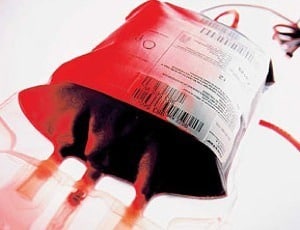
The AABB compiles an annual synopsis of the published literature covering important developments in the field of transfusion medicine. An abridged version of this work is being made available in TRANSFUSION, with the full-length report available as Appendix S1 (available as supporting information in the online version of this paper)” Cohn et al (2019). Abstract: […]
85% of hemodialysis patients have suspected CRBSI confirmed

CRBSI is confirmed in 85% of catheter-dependent hemodialysis patients in whom it is suspected” Farrington and Allon (2019). Abstract: BACKGROUND: Catheter-related bloodstream infections -(CRBSI) are associated with a high burden of morbidity and mortality, but the impact of infecting organism on clinical outcomes has been poorly studied. METHODS: This retrospective analysis of a prospective vascular […]
Successful management of a Bacillus cereus CRBSI outbreak

We report an outbreak of B. cereus catheter-related bloodstream infection (CRBSI) in the pediatric ward and aim at identifying risk factors and effective infection control measures for the outbreak” Yamada et al (2019). Abstract: Bacillus cereus can spread easily in various environments and can contaminate medical environments, such as ventilator equipment, intravascular catheters, and linen. […]
Apixaban for management of upper extremity deep vein thrombosis

We anticipate that the prospective administration of apixaban for clinically symptomatic UEDVT will be associated with a rate of recurrent VTE that is acceptable when compared with the historical controls reported in the literature, and a favorable safety profile analogous to that seen in former studies of apixaban” Woller et al (2019). Extract: ARM‐DVT will […]
Reduction of exposure to plasticizers in stored red blood cell units
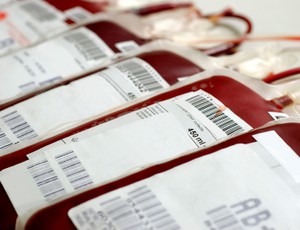
The aim of the study was to assess the concentration of plasticizers in red blood cell units according to storage time and after mechanical rinsing using a cell salvage device” Münch et al (2019). Abstract: INTRODUCTION: Plastic can be toxic and hazardous to an organism’s health, but it is being widely used in our daily […]
PICC associated chronic thromboembolic pulmonary hypertension

This was the first case of CTEPH reported related to long-term PICC use outside the setting of malignant disease” Masding et al (2019). Abstract: A 36-year-old woman presented with recurrent pulmonary emboli (PE) despite oral anticoagulation. She was a type I diabetic with severe gastroparesis requiring insertion of multiple long-term peripherally inserted central catheters (PICC) […]
The use of atypical analgesics by intravenous infusion

This review will focus on three drugs commonly infused as intravenous co-analgesics” Hutchins and Rockett (2019). Abstract: Atypical analgesics include antiepileptics and other membrane stabilizers (lidocaine and mexilitine), antidepressants, alpha-2-noradrenergic agonists, N-methyl-d-aspartate (NMDA) antagonists, corticosteroids and cannabinoids. This review will focus on three drugs commonly infused as intravenous co-analgesics. We will review the theoretical mechanisms […]
Hospital-wide reduction in central line–associated bloodstream infections

Few data are available on hospital-wide incidence of central line–associated bloodstream infection (CLABSI) rates in patients with central venous catheter (CVC) in China, where many systemic obstacles holding back evidence-based guidelines implementation exist” Han et al (2019). Abstract: Background: Few data are available on hospital-wide incidence of central line–associated bloodstream infection (CLABSI) rates in patients […]
Impact of Vascular Access Team implementation

“Central line-associated bloodstream infections (CLABSIs) account for one-third of all hospital-acquired infections and can cost the health care system between $21,000 and $100,000 per infection” Savage et al (2019).
Evaluation of a tool to score donor vein suitability for blood donation
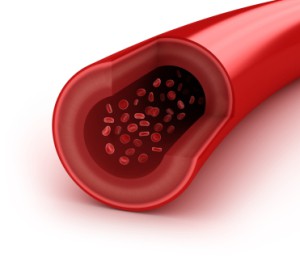
A specific blood donation vein scoring tool was assessed to measure donor vein suitability for whole blood collection and investigate the correlation of the donor’s veins with donation outcomes” Hirani et al (2019). Abstract: BACKGROUND AND OBJECTIVES: Phlebotomy is a central task for whole blood donation, yet there are no published standards regarding systematic donor […]
Utilization of a central venous catheter insertion care bundle

By implementing the CVC care bundle in clinical practice in accordance with national policies, medical utilization decreased, thereby considerably improving medical resource usage” Chung et al (2019). Abstract: OBJECTIVES: The objectives of this study are to explore medical care utilization associated with promoting the central venous catheter (CVC) care bundle plan using Taiwan’s National Health […]
Current practice in dialysis central venous catheter management
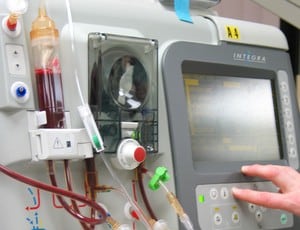
To explore the current practices related to the insertion, management and removal of dialysis central venous catheters used in patients with chronic kidney disease requiring haemodialysis” Craswell et al (2019). Abstract: AIM: To explore the current practices related to the insertion, management and removal of dialysis central venous catheters used in patients with chronic kidney […]
Point-of-care analyses of blood samples from intraosseous access
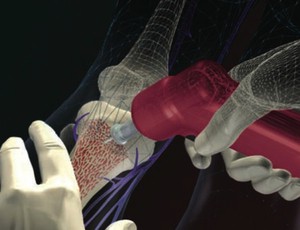
When vascular access is challenging, IO access can be used for emergency POC analyses to help guide clinical decision-making. However, the limitations of IO POC analyses must be carefully considered” Jousi et al (2019). Abstract: BACKGROUND: Intraosseous (IO) access is used for fluid and medication administration in emergency situations when difficulties with vascular access are […]
Cost-effectiveness of infusion pumps to reduce errors in a Pediatric ICU

To analyze cost-effectiveness and to calculate incremental cost-effectiveness ratio of the use of infusion pumps with drug library to reduce errors in intravenous drug administration in pediatric and neonatal patients in Intensive Care Units” Silva et al (2019). Abstract: OBJECTIVE: To analyze cost-effectiveness and to calculate incremental cost-effectiveness ratio of the use of infusion pumps […]
Optical skill-assist device for ultrasound-guided vascular access

Ultrasound-guided central venous catheterization may cause lethal mechanical complications intraoperatively. We developed a novel device to prevent such complications. It works as a needle guide to supplement the operator’s skill” Asao et al (2019). Abstract: Ultrasound-guided central venous catheterization may cause lethal mechanical complications intraoperatively. We developed a novel device to prevent such complications. It […]
Retrospective data of long-term home parenteral nutrition

The aim of this study was to evaluate the safety and efficacy of home parenteral nutrition (HPN) service in patients with benign chronic intestinal failure (CIF)” De Francesco et al (2019). Abstract: OBJECTIVES: The aim of this study was to evaluate the safety and efficacy of home parenteral nutrition (HPN) service in patients with benign […]
Stepwise technique for central venous catheter placement under ultrasound guidance

Due to its relative simplicity, easy reproducibility, and fair accuracy to diagnose distal thrombus; incorporation of this technique into a routine check of CVC, should be feasible” Patil et al (2019). Extract: Response to augmentation maneuvers has been used to diagnose upper extremity thrombosis.[4],[5] Due to its relative simplicity, easy reproducibility, and fair accuracy to […]
Agitated saline during ultrasound subclavian central line placement

Agitated saline during central line placement is described for the purpose of identifying the subclavian vein during ultrasound-guided procedures” Araj et al (2019). Abstract: Agitated saline during central line placement is described for the purpose of identifying the subclavian vein during ultrasound-guided procedures. You may also be interested in… [rp4wp] Reference: Araj, F.G., Pena, J. […]
Maximal sterile barrier precautions independently contribute to decreased CLABSI

Our objective was to investigate the association of MSB implementation with central line-associated bloodstream infection (CLABSI) in very low birth weight infants” Kinoshita et al (2019). Abstract: BACKGROUND: The use of peripherally inserted central catheters (PICCs) in neonates differs among various institutions and countries because there are no random controlled trials or large observational studies […]
Severe anaphylactic reactions triggered by chlorhexidine-coated catheters

Intraoperative insertion of chlorhexidine-coated central venous catheters can trigger life-threatening anaphylaxis in susceptible patients undergoing renal transplantation” Ho et al (2019). Abstract: PURPOSE: Although intraoperative anaphylaxis during surgery is a rare event, we describe five patients who experienced perioperative anaphylactic reactions during renal transplantation and were referred for investigation. CLINICAL FEATURES: Skin-prick and intradermal skin […]
Inadvertent carotid artery cannulation with malposition of catheter tip in right ventricle
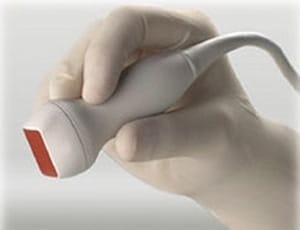
We report a rare case of inadvertent cannulation of internal carotid artery in patients of tetralogy of Fallot undergoing intracardiac repair during an attempt to cannulate internal jugular vein” Negi et al (2019). Abstract: Central venous catheterization is an essential procedure in patient undergoing cardiac surgery, as it provides central venous pressure monitoring, fluid administration, […]
Ultrasound-guided central venous catheter placement through the axillary vein
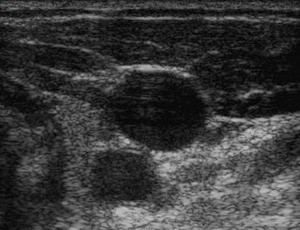
Placement of a central line catheter in the axillary vein using a novel ultrasound- guided bracket-assisted technique may be a feasible, safe and rapid alternative to the conventional jugular and subclavian approaches” Farina et al (2019). Abstract: BACKGROUND: Central venous catheterization is essential for careful administration of fluids and drugs in cardiac critical care patients. […]
Complications associated with internal jugular hemodialysis catheter

The current study examines the complication rate in people due to permanent intrajugular hemodialysis catheterization” Hyder et al (2019). Abstract: Introduction: A significant increase in patients with end-stage renal disease has been observed currently in our community. Kidney transplantation is the most promising cure but the problem is that large numbers of people are not […]
What is the best central venous catheter lock solution?

However, using traditional pairwise meta-analyses to summarise the evidence does not allow the inclusion of data from treatments that have not been compared head to head, which could impact the precision of pooled estimates in a meta-analysis. Therefore, we evaluated the efficacy and safety of the different lock solutions for CRBSI through a network meta-analysis” […]

